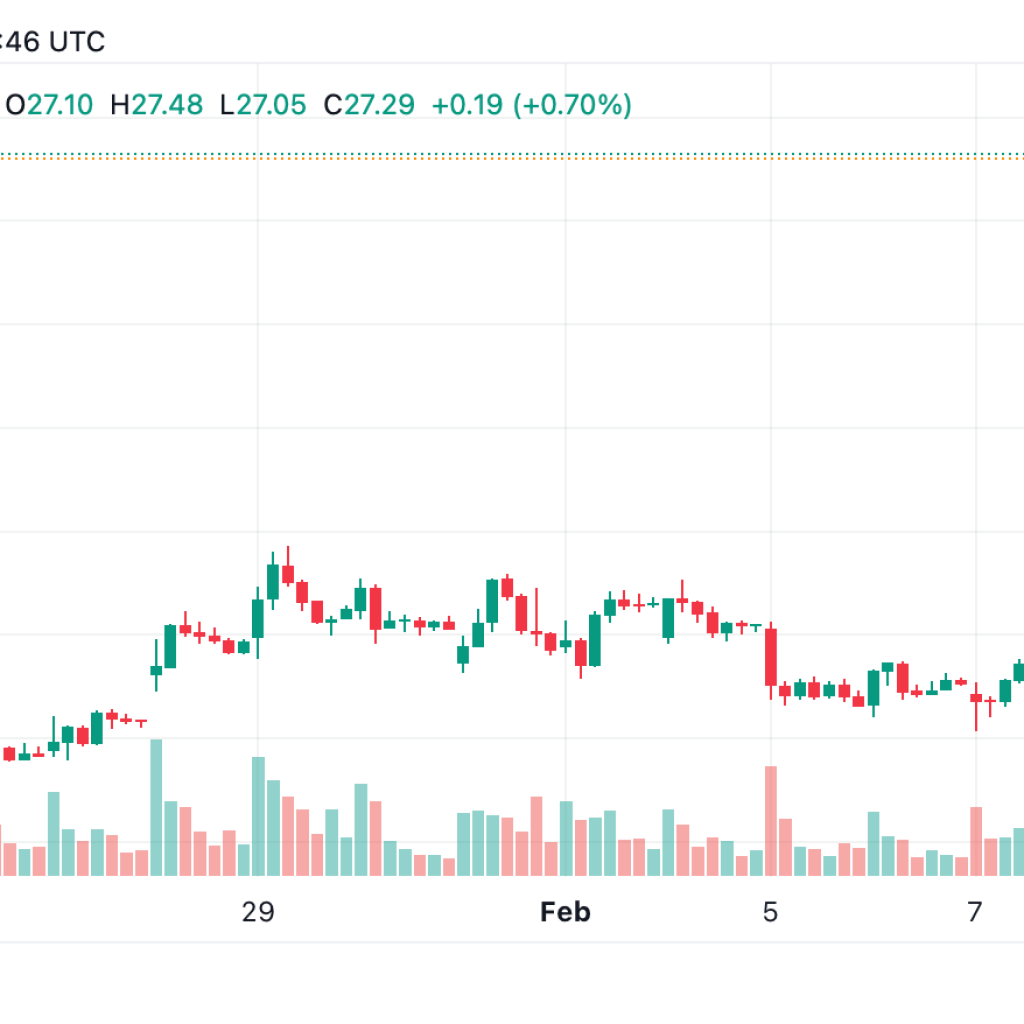
While tokenization of real-world assets (RWAs) like gold and real estate is a prospect that unnerves stakeholders in traditional financial systems, according to Yusuf Sevim, the co-founder of the decentralized protocol Metatime, this can potentially bring with it “immense benefits.” Enhanced liquidity for real estate markets is one benefit that accrues to players in the traditional financial services industry if they embrace the tokenization of RWAs, Sevim argued.
Overcoming Trust and Regulatory Issues
The co-founder also told Bitcoin.com News that embracing tokenization now “is a strategic move for the future” and one that aligns with what he described as “the inevitable shift towards decentralized finance.” However, Sevim said the prospect of the tokenization of RWAs becoming widespread will depend on how regulatory and trust issues are overcome.
Remarking on cross-border trading of tokenized RWAs in an environment that lacks a unified regulatory framework, Sevim suggested standardizing “the tokenization processes to align with local regulations.” In addition, he thinks that working with legal experts from different jurisdictions helps to ensure the trading of tokenized RWAs is not in violation of local regulations.
Elsewhere, in written answers sent to Bitcoin.com News via Telegram, Sevim offered his thoughts on how trusted intermediaries can still play a role in an era likely to be dominated by the blockchain. Below are the Metatime CEO’s answers to all the questions sent.
Bitcoin.com News (BCN): Can you tell our readers what it means to tokenize real-world assets (RWAs) and how it could unlock value for asset owners and traders?
Yusuf Sevim (YS): Tokenizing real-world assets (RWAs) means representing tangible or intangible assets on a blockchain in the form of digital tokens. Each token can signify ownership or a stake in the underlying asset, such as real estate, artwork, or commodities. This process allows assets to be easily divided, traded, and transferred on digital platforms, unlocking increased liquidity, accessibility, and market efficiency. Asset owners benefit from the ability to monetize illiquid assets, while traders gain access to a broader range of investment opportunities in a more transparent and efficient manner.
BCN: Assuming it really takes off, in your opinion, in what ways can tokenization change the financial and investment landscape?
YS: Assuming tokenization achieves mainstream acceptance, its potential to redefine the financial and investment landscape is monumental:
Increased Liquidity: Traditional illiquid assets like real estate can be fractionalized through platforms such as our Metarealestate, unlocking significant capital and enabling easier trades on digital platforms.
Broadened Access: With tools like our MetaNFT and Metamusic / Metamovie platforms, we’re democratizing access, allowing everyone, from emerging artists to the general public, to invest in and benefit from assets that were previously out of reach.
Enhanced Transparency: Using Metachain, our EVM-based decentralized blockchain, ensures a transparent, secure, and immutable transaction history, building trust like never before.
Efficient Transactions: Leveraging the power of Metadex, our decentralized exchange on Metachain, we’re streamlining processes for faster and more cost-efficient transactions.
Cross-border Trade: With the introduction of Metastablecoin, trading across borders becomes seamless, eliminating traditional barriers and encouraging global investments.
New Financial Products: As more assets become tokenized on our platforms, new financial opportunities emerge, expanding the boundaries of the traditional financial world.
At Metatime, we’re not just envisioning this future; we’re actively building it. Our products, including the upcoming Metawallet, aim to simplify interactions with blockchain assets, ensuring everyone, regardless of their tech expertise, can participate in this financial revolution.
BCN: When it comes to tokenizing real estate, gold, stocks, and bonds, the existing stakeholders in traditional financial systems can be resistant to this new technology as their revenue models could be disrupted by tokenization. Are there any incentives for them to tokenize RWAs?
YS: It’s natural for stakeholders in the traditional finance sector to be apprehensive, given the paradigm shift. However, tokenization offers immense benefits. Firstly, it brings enhanced liquidity to the market, particularly noticeable in sectors like real estate, as showcased by our Metarealestate platform. Secondly, with our products like Metamusic and Metamovie, businesses can tap into a global audience, fostering more diverse investment opportunities.
Additionally, platforms such as Metachain offer unparalleled transparency and efficiency in transactions, boosting investor trust. Lastly, embracing tokenization now is a strategic move for the future, aligning with the inevitable shift towards decentralized finance. At Metatime, our aim is to seamlessly bridge traditional investments with the innovative world of blockchain, delivering the best of both worlds.
BCN: In your opinion, what are the key challenges to the widespread adoption of tokenized real-world assets?
YS: In my perspective, the challenges are multifaceted. First, regulatory clarity is essential. Different jurisdictions have varied stances on tokenization, which can pose challenges for platforms like Metarealestate or Metamusic which operate on a global scale. Another challenge is building trust. Traditional investors need assurance regarding the security, reliability, and legitimacy of blockchain platforms. This is where our Metachain comes into play, offering a decentralized and robust solution.
Also, user experience is crucial. Tokenized assets should be as easy to manage as their traditional counterparts. Our upcoming Metawallet aims to address this by offering a seamless experience, much like any banking app, but with the added benefits of blockchain. Lastly, integrating traditional financial systems with blockchain requires both technological and operational shifts, and we’re actively working on bridging this gap with our diverse product lineup.
BCN: Your company claims to be building an entire ecosystem of platforms to bring users online and offline investment opportunities all in one place. Can you describe what Metatime has in store for users?
YS: Certainly. Metatime is at the forefront of revolutionizing the investment landscape by providing an integrated ecosystem. In Metachain, we have an EVM-based decentralized blockchain network which forms the backbone of our offerings. Our native token, Metatimecoin, operational on Metachain, plays a pivotal role in transactions and governance.
For traders and investors, our Metadex and Metaexchange provide a decentralized and centralized trading experience respectively. While Metadex focuses on transparent, trustless swaps, Metaexchange offers a more traditional trading platform feel with enhanced features.
Artists and creators can leverage MetaNFT, our NFT marketplace, which uniquely allows for fragmenting a single NFT for multiple ownerships. Additionally, users can easily mint their own NFTs, democratizing the creation process. Our Metarealestate platform is an avenue for real estate tokenization, transforming how property investment is viewed by enabling micro-investments and increasing market liquidity.
With Metamusic and Metamovie, artists can tokenize their work, enabling them to raise funds more organically, while giving investors a new avenue for investment. Moreover, our Metastablecoin provides stable currencies based on EUR, USD, and TRY on the Metachain network, ensuring that users have a stable medium of transaction.
Lastly, our soon-to-launch Metawallet will simplify asset management, offering users the ease of managing their bank accounts, tokenized assets, and investments, all within a single, user-friendly application. In essence, Metatime is diligently working to combine the world of traditional investment with the innovative sphere of blockchain, making investment more accessible, efficient, and comprehensive for all.
BCN: Given the lack of a globally unified legal and regulatory framework, how would the cross-chain and cross-border trading and ownership of RWAs work?
YS: Navigating the complex global regulatory landscape is undoubtedly one of the primary challenges. However, at Metatime, we are constantly adapting. By integrating interoperability features in our Metachain, we ensure seamless cross-chain transactions. This is crucial for ensuring that our users can effortlessly trade and transfer assets across different blockchain networks.
As for cross-border ownership and trading, our platforms, particularly Metarealestate and Metastablecoin, employ standardized tokenization processes to align with local regulations as closely as possible. It’s all about collaboration. We are in active dialogue with legal experts worldwide to bridge the regulatory gaps and ensure our users can confidently and legally operate in multiple jurisdictions.
Moreover, our soon-to-be-launched Metawallet will act as a comprehensive hub, making it easier for users to manage and understand their holdings, irrespective of the country or chain, combining the complexities into a user-friendly interface.
BCN: How do you see the role of trusted intermediaries — usually the traditional financial institutions — evolving in an era where the assets are transparently traded on-chain?
YS: In this rapidly evolving landscape, traditional intermediaries are bound to adapt and find their position. While blockchain promises transparency, immutability, and reduced friction in transactions, trusted intermediaries have decades of reputation, experience, and vast networks. I believe there’s room for symbiosis. Institutions can leverage blockchain to enhance their services, reduce costs, and increase trust.
At Metatime, we’ve built platforms like Metaexchange and Metadex to exemplify how traditional financial mechanisms can merge with decentralized ones. Our vision isn’t about replacing the old but integrating the new in a manner that uplifts the entire financial ecosystem.
What are your thoughts on this interview? Let us know what you think in the comments section below.





